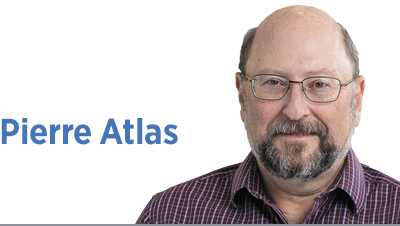Subscriber Benefit
As a subscriber you can listen to articles at work, in the car, or while you work out. Subscribe Now I am writing this column on the last day of July. By the time you read it, we will know who Kamala Harris has picked as her running mate and how that choice is being received. We may also know whether and to what extent J.D. Vance survived the intense backlash to his numerous controversial comments.
I am writing this column on the last day of July. By the time you read it, we will know who Kamala Harris has picked as her running mate and how that choice is being received. We may also know whether and to what extent J.D. Vance survived the intense backlash to his numerous controversial comments.
July was a political roller-coaster. It began in the shadow of the June 28 presidential debate and President Joe Biden’s shockingly bad performance. The 81-year-old president’s incoherence left Democrats in a pall of dismay and angst, and many came to believe Biden was not up to the task of running for reelection, let alone winning. Biden’s shakiness in his subsequent public events exacerbated Democrats’ concern about the general election: Not only might Biden lose, but he could take down-ballot Democrats with him.
On July 13, America was shocked by the assassination attempt on former President Donald Trump at a rally in Butler, Pennsylvania, which wounded Trump slightly, killed one attendee and seriously wounded two others.
In the midst of that chaos and terror, the 78-year-old Trump had the wherewithal to take a moment to pose for the cameras. One photo in particular became instantly iconic: Trump’s blood-drenched ear, fist raised in defiance, with the American flag in the background. That picture offered a sharp if simplistic contrast with Biden of strength versus frailty. Trump’s popularity increased, and Democrats openly called for Biden to withdraw from the race.
The sense of electoral inevitability increased days later at the Republican National Convention, where Trump, with bandaged ear, was welcomed as the conquering hero. Trump’s selection of Vance, the 39-year-old novice senator from Ohio, as his running mate reflected this confidence, as Vance added little to the ticket strategically but instead doubled down on MAGA populism.
Three days after the RNC ended, however, Trump’s momentum took a gut punch. On July 21, Biden announced that he would step aside as candidate and support Vice President Kamala Harris for the Democratic nomination. This selfless act by a president who had already locked up enough delegates to secure his nomination was unprecedented in American history. And it reshaped the political dynamic—and the polls—overnight.
Within days, all of Harris’ potential rivals had endorsed her, and she shored up enough delegates to secure the nomination. Democrats’ enthusiasm—and sense of relief—was palpable.
The explosion of support for Harris was not limited to the party establishment. Massive grassroots events held within the first week of her candidacy established a new model for political engagement. Separate online events targeting Black women, Black men, white women and “white dudes” for Harris attracted hundreds of thousands of ordinary citizens whose small donations raised over $15 million. Within a week of Biden’s withdrawal, Harris had raised over $200 million for her campaign.
As July came to an end, Harris was going up in the polls, Trump was now the “old man” in the race, and his VP choice—who seemed to have undergone little vetting—was proving to be a public relations disaster. Video and audio clips surfaced demonstrating Vance’s disdain and outright hostility toward women who don’t have children. Vance’s attacks on Trump from 2016, calling him a racist and even suggesting that Trump might be “America’s Hitler,” also proved embarrassing.
We still have three months until the election, and the political whiplash that was July should serve as a caution. Nothing is inevitable in politics, especially in this campaign season.•
_________
Atlas, a political scientist, is a senior lecturer at the Paul H. O’Neill School of Public and
Environmental Affairs at Indiana University Indianapolis. His opinions do not necessarily reflect those of Indiana University. Send comments to [email protected].
Click here for more Forefront columns.
Please enable JavaScript to view this content.
